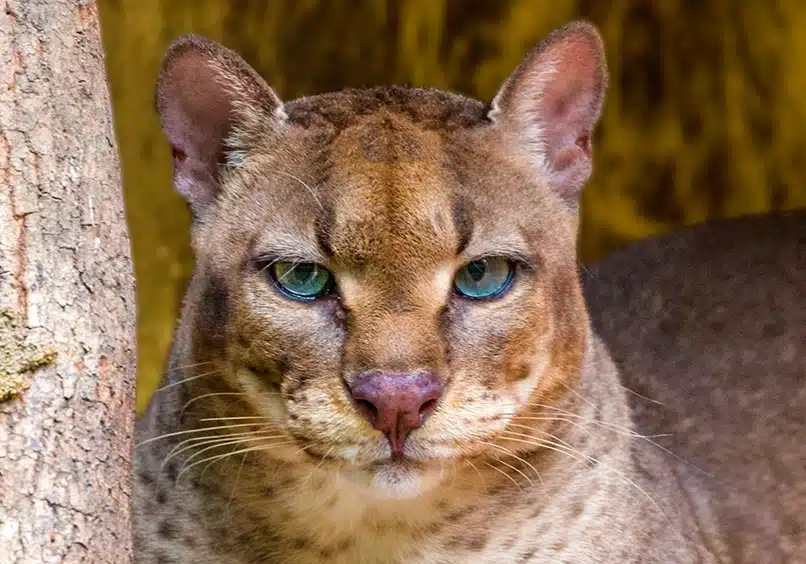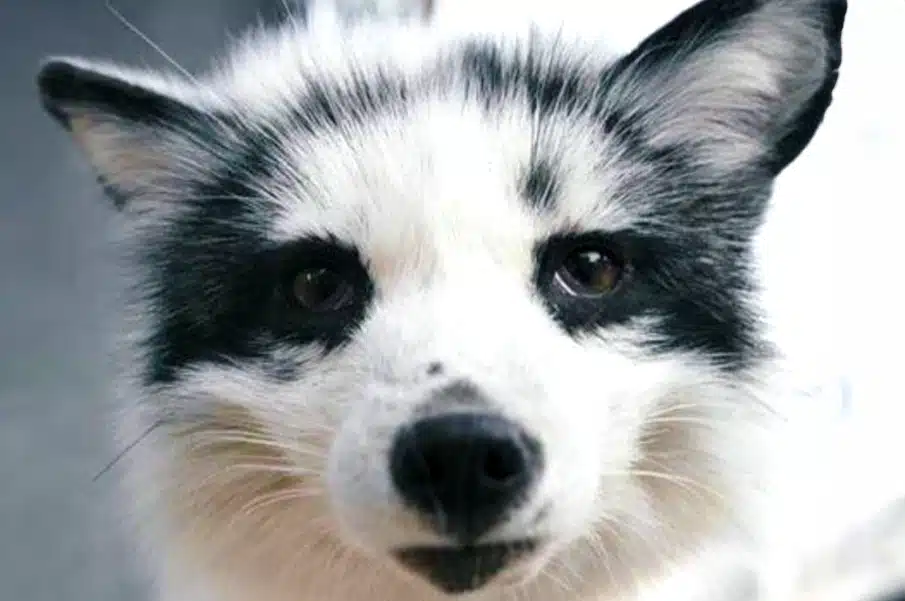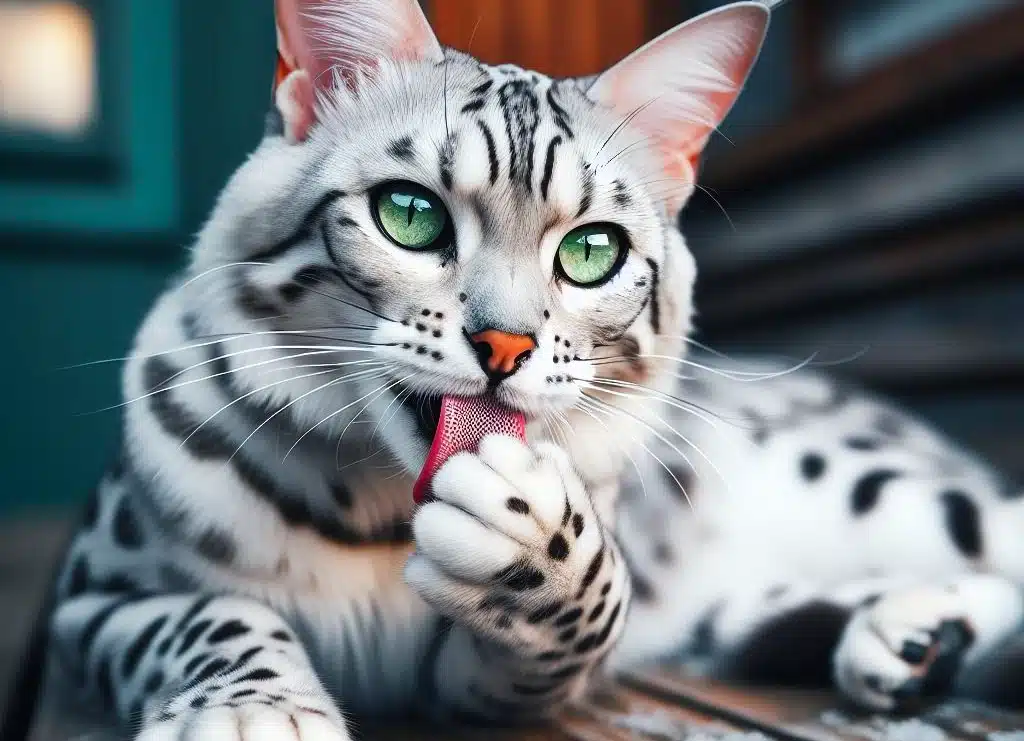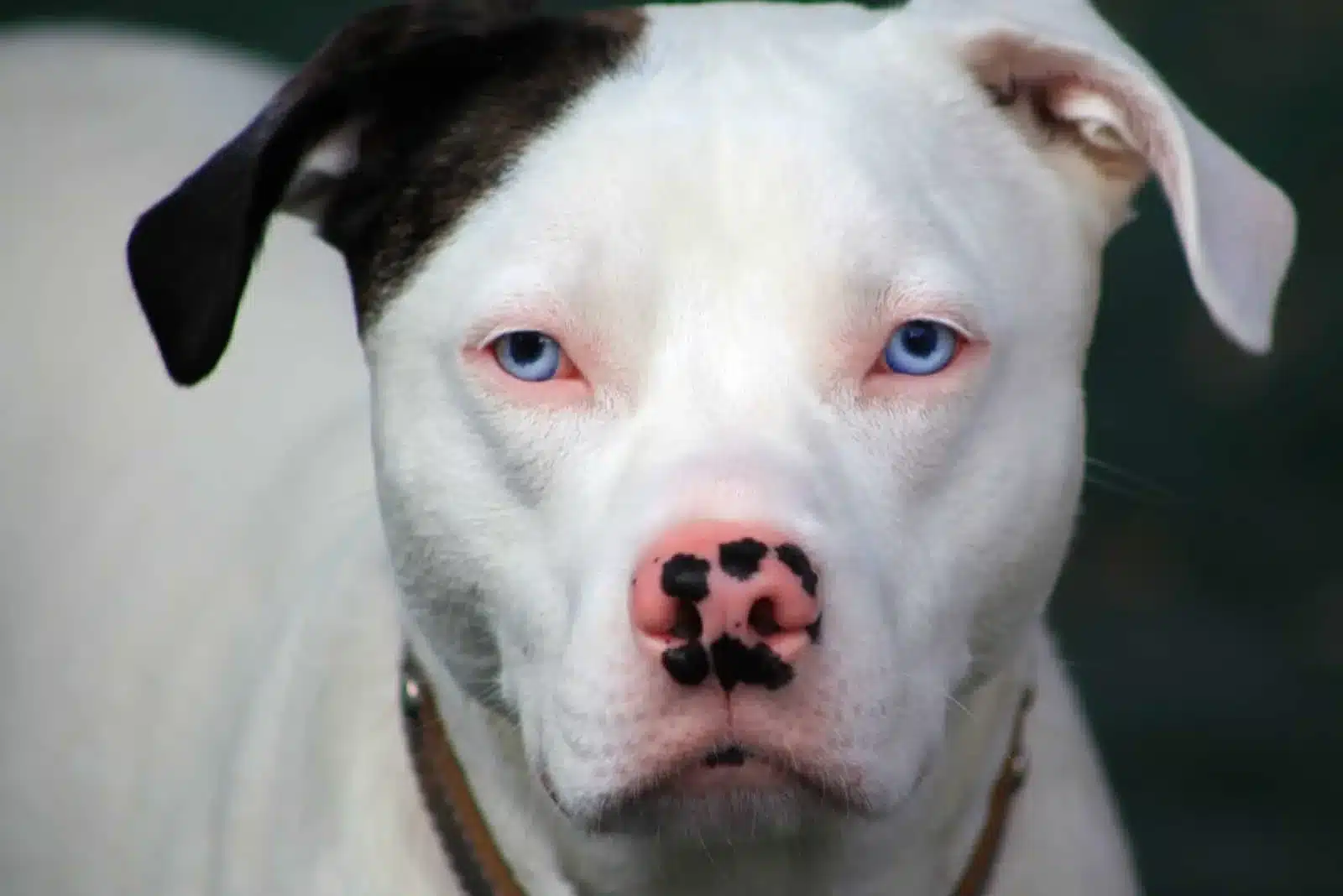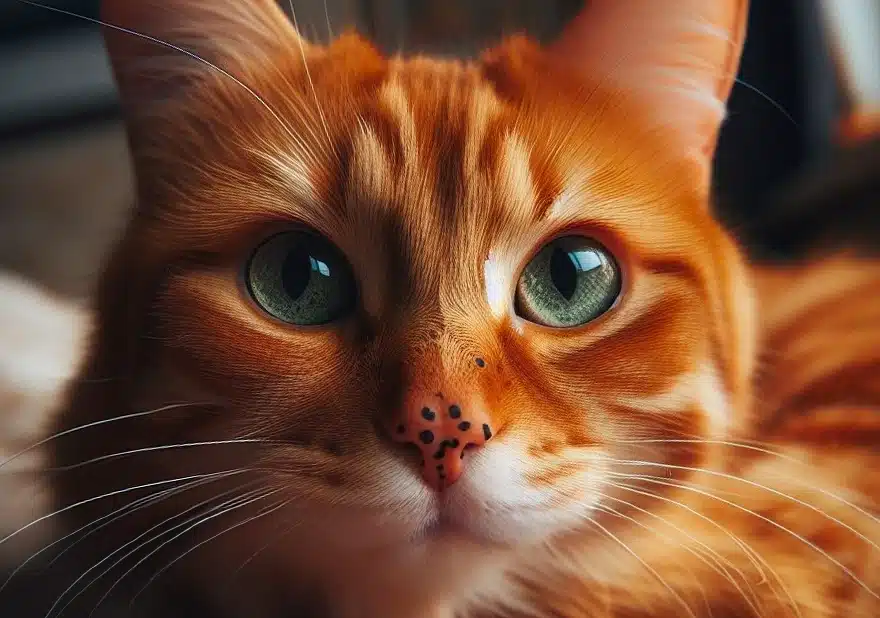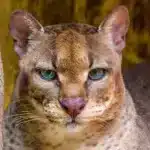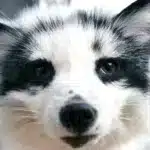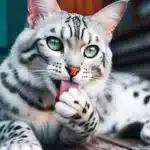Black Animals With Melanism: Causes, Facts, And Examples
Ads Disclosure ?
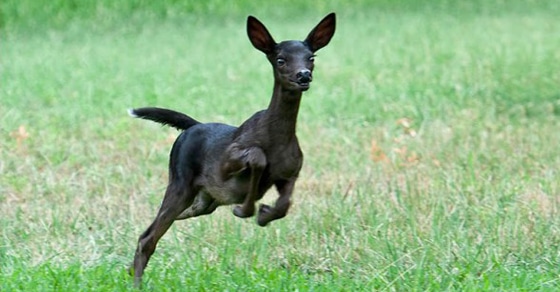
Melanism is a genetic pigment mutation that causes an organism to develop an excess of melanin, the natural pigment responsible for dark coloration in skin, hair, feathers, or scales. While the more widely known condition of Albinism results in stunningly white animals, Melanism results in a much darker (often all-black) appearance than the non-melanistic members of the same species. It is observed across a variety of animal groups, including mammals, birds, and reptiles.
In some cases, melanism provides a survival advantage, such as improved camouflage in certain environments, leading to a greater likelihood of survival and, consequently, increased opportunities to reproduce.
Jump To Section
What Causes Melanism?
Pigmentation and Melanin Production
Melanin, the pigment responsible for dark coloration, is produced within the body through a multistep biochemical process. The essential amino acid tyrosine is converted into melanin within specialized cells called melanocytes. Two types of melanin can be produced: eumelanin, which lends to brown and black hues, and pheomelanin, which contributes to red and yellow coloring.
In the case of melanism, an overwhelming presence of eumelanin results in a visibly darker pigment forming on the animal’s skin, fur, or feathers. This adaptation can be a response to various environmental pressures, allowing improved camouflage or increased protection from solar radiation.
Genetic Mutations
The occurrence of melanism in the animal kingdom is usually attributed to specific genetic mutations. These mutations affect the genes that regulate melanin production.
Specific genes are responsible for the increased melanin production when they are present in certain combinations. In some species, melanism is caused by a recessive allele, which requires an individual to receive two copies of the allele to express the trait. However, the genetics of melanism can be complex, varying greatly among different species. For instance, melanistic jaguars and leopards often exhibit ghost-like rosettes or spots, indicating that the pattern typical of their species is present but obscured by the increased melanin pigment.
The most common gene associated with melanism is known as MC1R. When mutations occur in the MC1R gene or other genes involved in the melanin production pathway, an animal can exhibit a darker appearance due to the overproduction of melanin. The gene changes that lead to melanism are inherited and can be passed down to subsequent generations.
While melanism is an inherent characteristic, the prevalence of the trait within a population can change over time due to natural selection. In certain environments, darker individuals may be better suited to survive and evade predators, leading to a greater frequency of the melanism gene over generations. This type of adaptation highlights the dynamic relationship between an organism’s genetics and its habitat.
Types of Melanism

Melanism is a fascinating phenomenon that presents in various forms across the animal kingdom. From being a survival tactic to a byproduct of human environmental impact, melanism manifests in distinct ways.
Adaptive Melanism
Adaptive melanism refers to the increase in dark pigmentation of animals in their natural environments, which is thought to confer a selective advantage in the form of better camouflage in darker environments. This form of melanism often correlates with a higher survivability rate in certain environments.
Industrial Melanism
Linked closely with the effects of pollution on the environment, industrial melanism is associated with the way industrial pollutants have influenced the frequency of melanism. Industrial activities often darken habitats, which leads to an increased occurrence of dark-colored varieties of species within these areas, as their pigmentation provides a camouflage against predators.
Examples of this include animals like the peppered moth, which evolved darker wing patterns to better camouflage against the soot-covered trees during the Industrial Revolution, demonstrating natural selection in action.
Partial Melanism
Partial melanism in animals is a condition where an individual has an increased amount of melanin (the dark pigment responsible for coloration) in only certain parts of its body, as opposed to complete or true melanism where the dark pigmentation covers most or all of the body. This can result in patches, spots, or sections of the animal’s skin, fur, feathers, or scales being darker than the rest of the body.
Animals with partial melanism may exhibit a variety of patterns. For example, a partially melanistic bird might have unusually dark wings or head, while a partially melanistic snake might have irregular dark patches along its body. The condition can occur in many different species and may be due to genetic mutations or variations that affect melanin distribution.
Partial melanism should not be confused with piebaldism or leucism, where animals have patches of unpigmented areas (white or pale coloration), often due to a lack of melanocytes in those regions. In contrast, partial melanism is characterized by an excess of melanin in specific areas, leading to darker pigmentation.
This is a partially melanistic red squirrel:

And another partially melanistic one that appears to be the former squirrel’s mirror image:
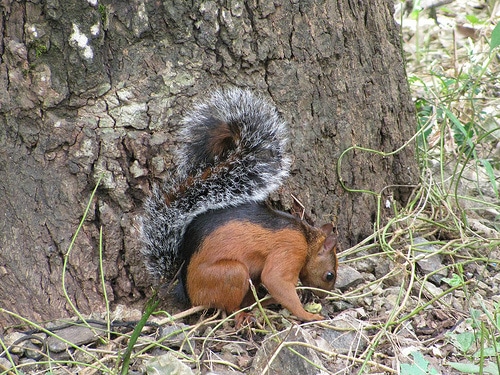
Pseudomelanism
Pseudomelanism, also known as abundism, is a pattern variation in animals characterized by an excess of markings such as spots or stripes, which are typically darker than the background color of the animal’s body. This condition is different from true melanism, which is an overall dark pigmentation caused by a high concentration of melanin throughout the body or in larger areas of the body.
In pseudomelanism, the normal pattern of the animal is exaggerated or altered, resulting in an unusual density or distribution of the typical markings. For example, a pseudomelanistic leopard would have an atypical abundance of spots, which could merge to create a darker appearance overall, but it would not be uniformly black like a melanistic (true melanism) leopard.
Pseudomelanism can occur in various species, including insects, reptiles, birds, and mammals. It is often the result of genetic variations and can sometimes provide a selective advantage in certain environments, similar to other coloration patterns. However, in other cases, it may simply be a neutral trait with no significant impact on the animal’s survival or reproduction.
This spotted zebra was photographed in the Maasai Mara game reserve in Kenya in 2019. Nicknamed “Tira”, the foal likely has polka-dots instead of the usual striped due to a pseudomelanism:
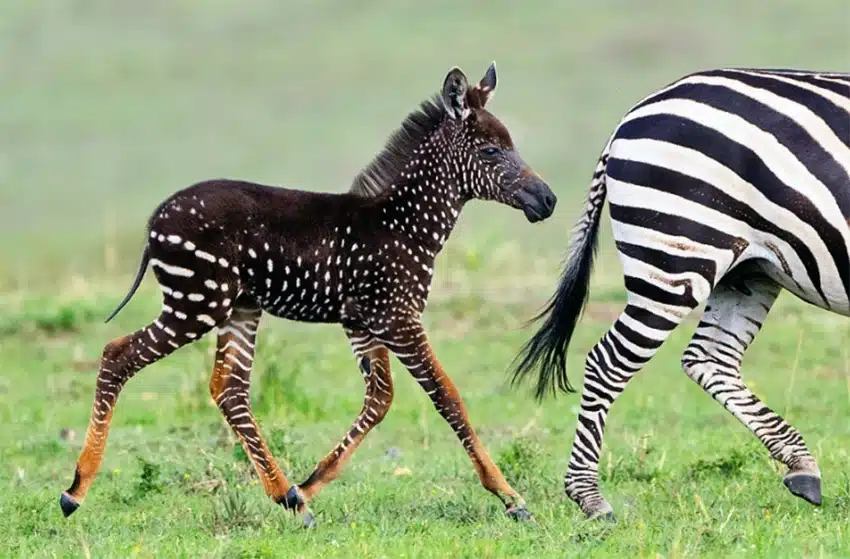
This distinctively colored leopard was photographed in India, and is believed to be pseudomelanistic:

At the Simlipal National Park, a tiger reserve in the Mayurbhanj district in the Indian state of Odisha, there are tigers that have very thick, wide black stripes, making their overall appearance much darker in color. This color variation is thought to occur due to pseudomelanism.

Evolutionary Advantages and Disadvantages
Melanism plays a significant role in adaptation and survival. It is an evolutionary trait that can provide either advantages or disadvantages to the affected animals.
Camouflage and Survival
Animals with melanism benefit from enhanced camouflage, which often improves their ability to remain undetected by predators and prey. For instance, in dense forests or dark environments, organisms with darker coloration can seamlessly blend with their surroundings. This adaptive advantage is pivotal in the predation-prey dynamics where the stakes are survival versus starvation.
The presence of melanism as a form of camouflage has been observed in multiple big cats, significantly influencing their hunting and evasion tactics.
Environmental Influences
The expression of melanism is intricately linked to environmental factors such as sunlight and absorption of heat. Dark coloration can be advantageous in colder regions as it leads to greater absorption of heat, aiding in thermoregulation.
Conversely, in sunlit habitats, melanistic individuals might be subjected to disadvantages due to overheating. Furthermore, evidence suggests that melanism in the cat family is influenced by intraspecific relationships (the interactions between individuals of the same species) with certain environmental pressures shaping the occurrence of melanism among distinct species and lineages.
Physical and Health Implications
While melanism can offer camouflaged protection and thermoregulatory benefits, it also comes with its own set of challenges. There is the potential for increased susceptibility to certain diseases due to the genetic mutations associated with melanistic traits.
Moreover, the darker pigmentation can also influence social signaling and mating success, potentially limiting genetic diversity within populations. The evolution of melanism in mammals, including the cat family, is a complex process with physical and health implications that extend beyond simple color changes.
Melanism in Mammals
Melanism occurs fairly frequently in the Felidae family (that is, wild cat species), so much so that many people mistakenly believe that there is a distinct species called “Black Panther” (those animals are simply melanistic leopards or jaguars). However, it has evidently been documented in many other mammals as well.
For other mammals, melanism can be more than an adaptive trait; it sometimes signals the presence of pollutants that induce such genetic changes.
Raccoon
Seen here with a “normal” looking friend, it’s easy to see the difference caused by melanism.

Deer
While extremely uncommon, deer can be melanistic.
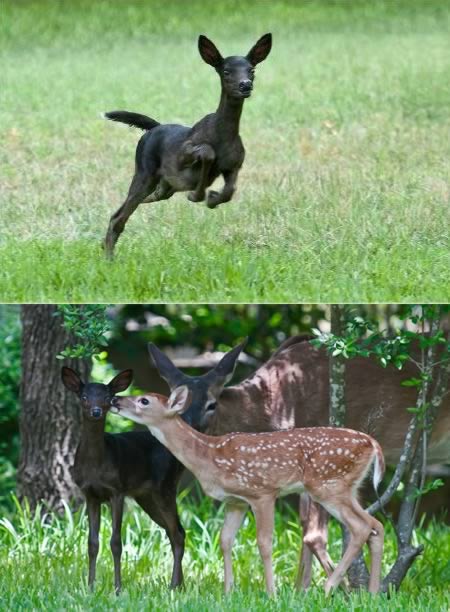
Jaguar
The animals usually referred to as “Black Panthers” are not a distinct species but rather melanistic jaguars or leopards.
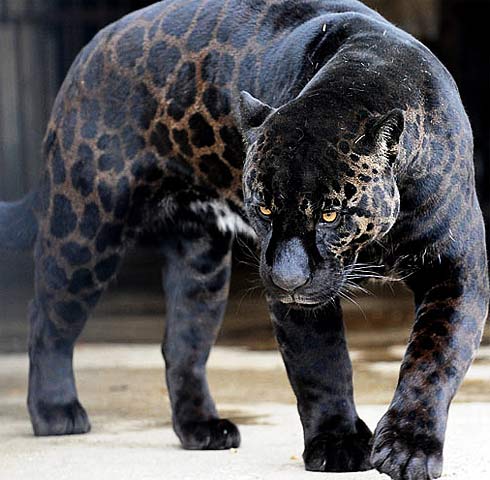
Squirrel
Both gray and red squirrels can be melanistic, resulting in an all-black animal. Gray squirrels with melanism are in fact fairly common.

Springbok
Springboks are a medium-sized antelope native to the south of the African continent.
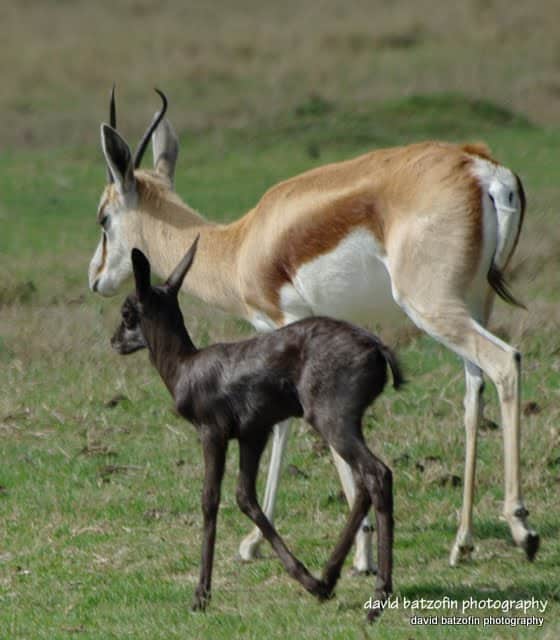
Jungle Cat
Also called a swamp cat (and sometimes, a jungle lynx), this is a medium-sized wild cat native to the Middle East and Asia. Very rarely, black ones can be spotted.
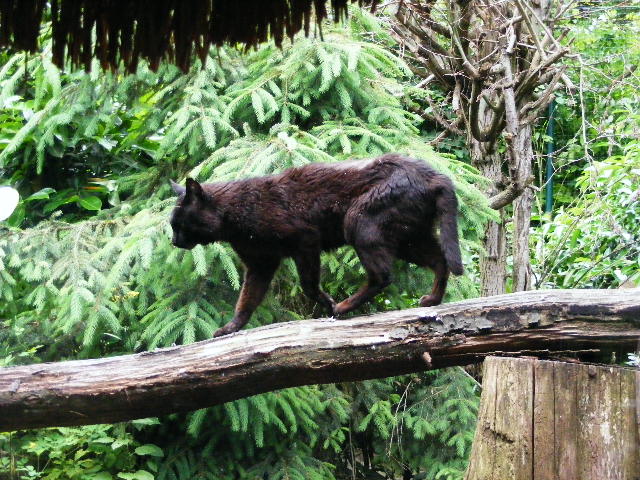
Seal
Melanistic seal is extremely rare.
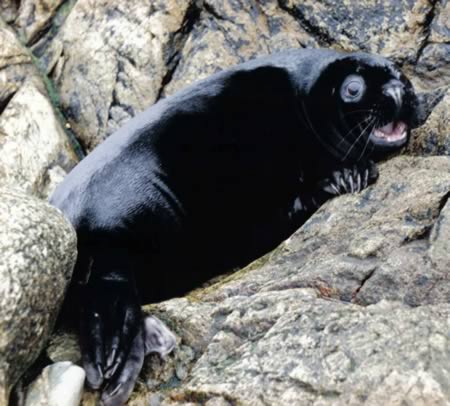
Geoffroy’s Cat
A wild cat native to South America, Geoffroy’s Cats can be melanistic as well.

Serval
This usually spotted wild cat is even more gorgeous with all-black fur.
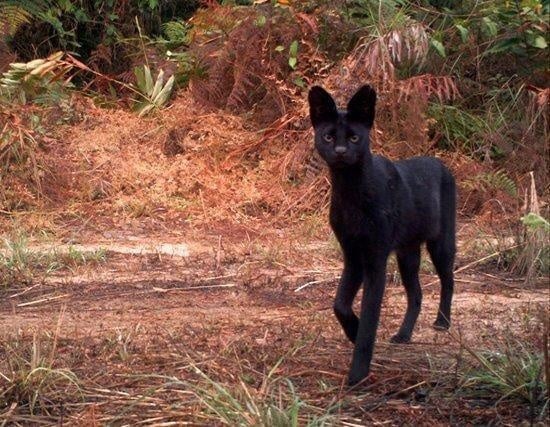
Camel
While certainly not an advantage in their scorchingly hot desert habitat, melanistic camels do exist.

Zebra
Who said all zebras have stripes? Certainly not this striking young specimen.
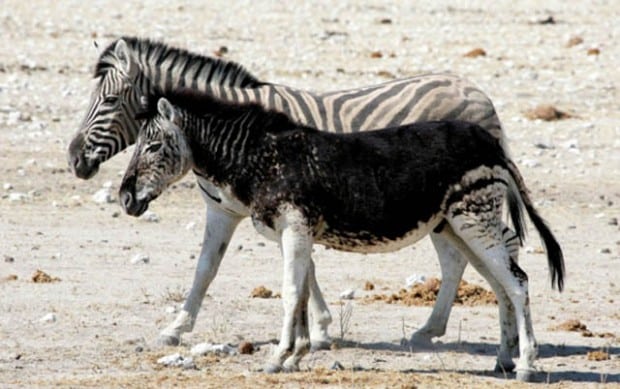
Coyote
Say what you will about coyotes, this melanistic one is simply stunning.
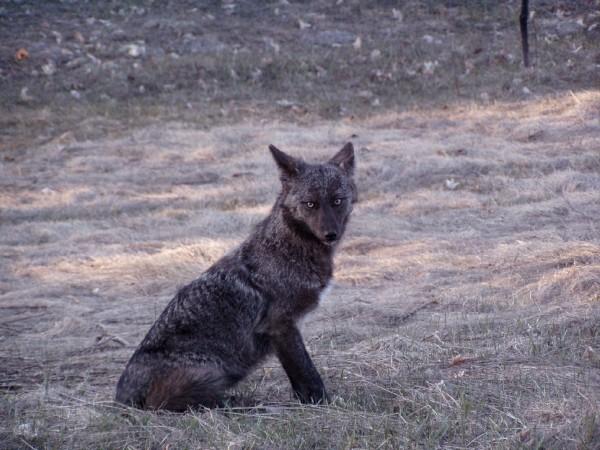
Leopard
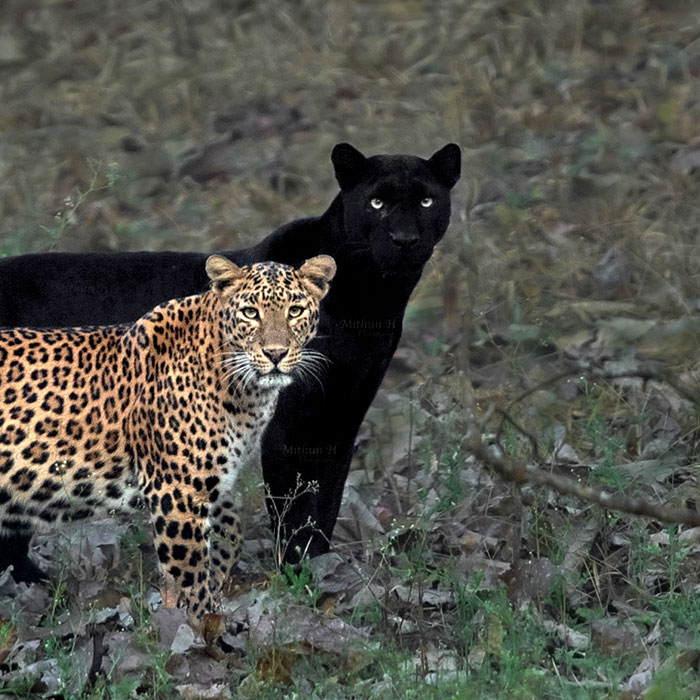
Fox
Not to be confused with the dark summer coat of the Arctic Fox, this black fox is melanistic.

Bobcat
Melanistic bobcats are rarely seen in North America.

Gray Wolf
Black gray wolves (that’s a little confusing…) are melanistic as well.

Groundhog
Also known as a woodchuck in certain parts, the groundhog is a common rodent in North America. What’s not common at all are melanistic, black ones.
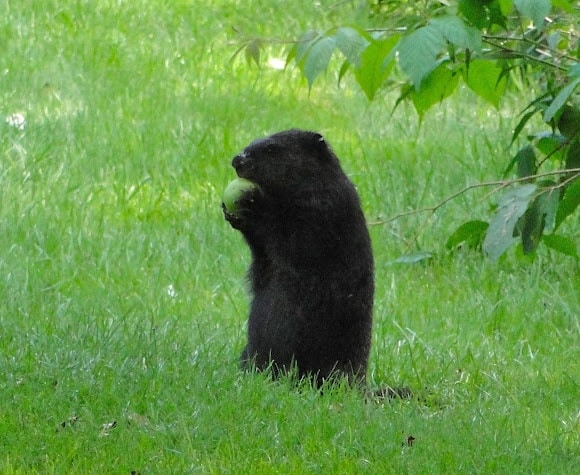
Clouded Leopard
This wild cat’s natural habitat is the forests of India, Bhutan, Southeast Asia and South China. They are shy and only seldomly seen in the wild. Spotting a melanistic individual is a once in a lifetime event.
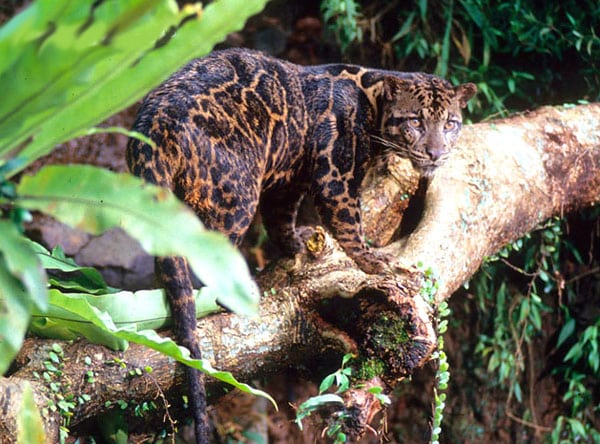
Melanism in Birds
Melanism isn’t restricted to mammals; it’s prevalent across different species. In birds, melanistic individuals may exhibit darker plumage compared to their non-melanistic counterparts. The mutation can affect their mating signals and predator avoidance strategies.
King Penguin

Adelie Penguin
This is a smaller penguin species that is very common along the coast of Antarctica.
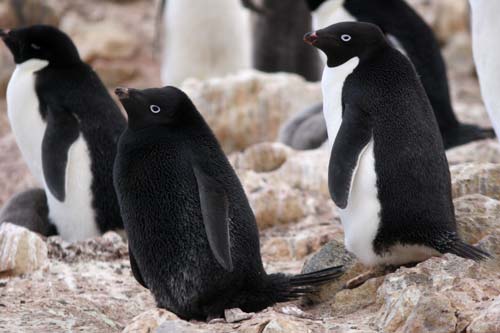
Chicken
Black chickens, which are melanistic, have a striking appearance – don’t they?

Barn Owl
While many wild animals with melanism are at greater risk of falling victim to a predation since their dark pigments make them easier to be spotted, this nocturnal bird probably enjoys the camouflaging benefits of its dark feathers when hunting for prey at night.

Melanism in Reptiles and Amphibians
Amphibians and reptiles are not left out of the conversation when it comes to melanism. This genetic condition can manifest in various species, from frogs to snakes, altering their usual color patterns. While the ecological implications may vary, the dark pigmentation often plays a role in thermoregulation, predatory interactions, and habitat selection among these ectothermic creatures.
Turtle
Can reptiles be melanistic? Yes, they can.
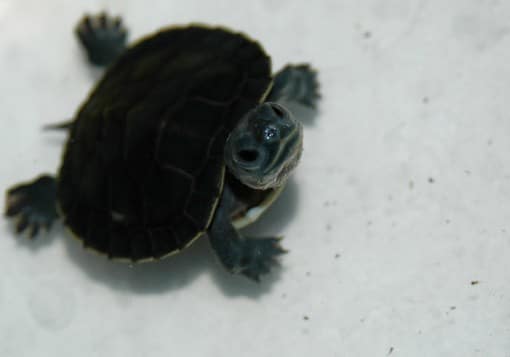
Eastern Blue Tongue Lizard

Cobra
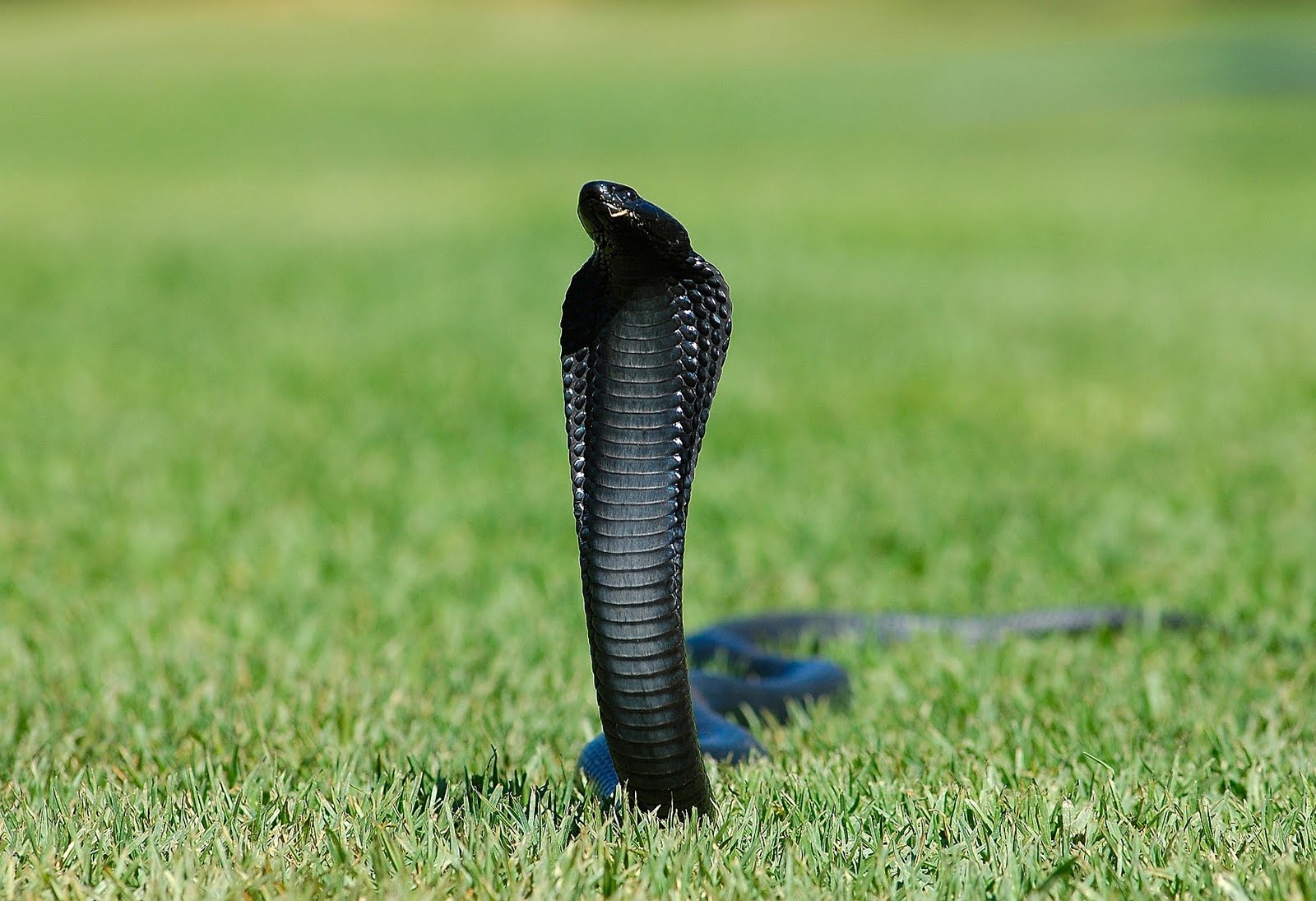
Melanoid Axolotl
Common as pets, melanoid axolotls are a morph characterized by their darker colors, caused by melanism.
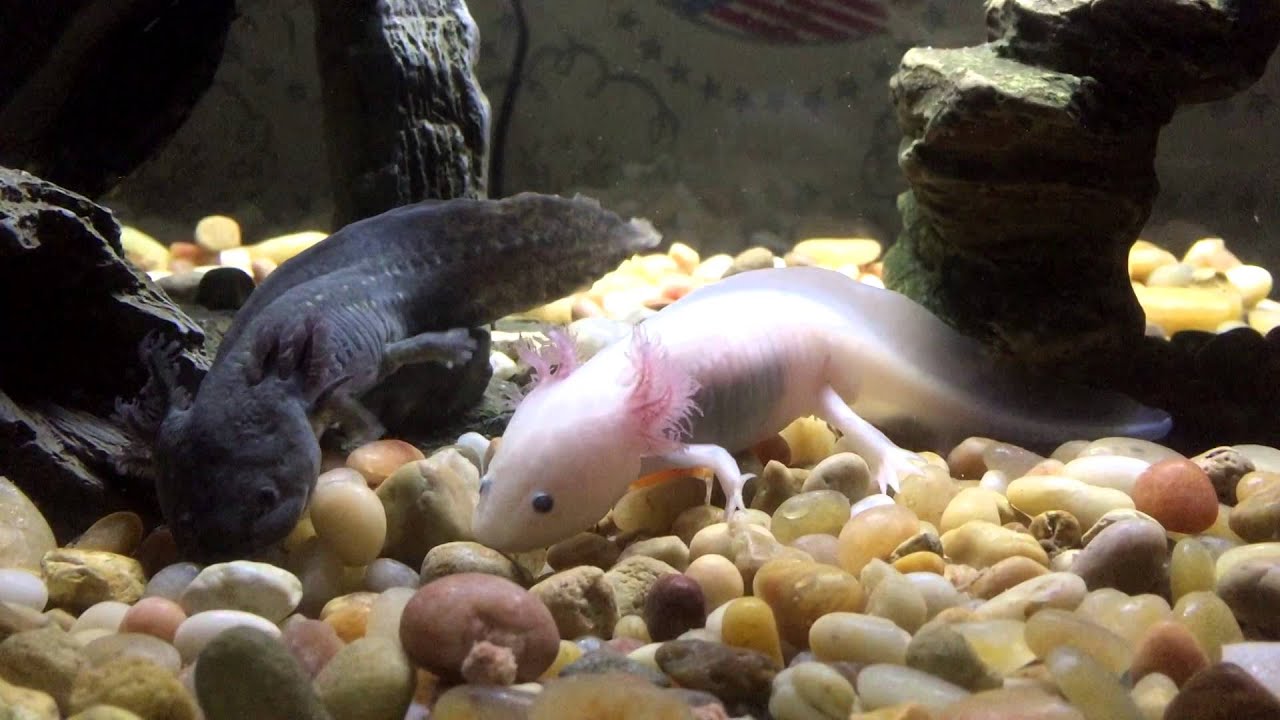
Crocodile

American Alligator
Shown here with an albino variant (and a “normal” one).
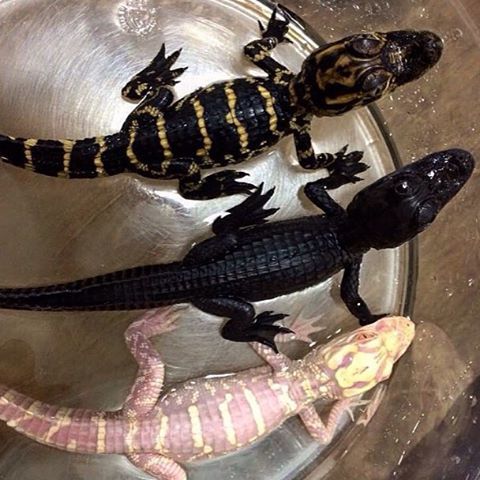
Melanism in Insects
Peppered Moth
The peppered moth is often cited as an example for where industrial melanism demonstrates changes in populations due to environmental factors like pollution.

Frequently Asked Questions
How does melanism occur in animals?
Melanism occurs through a genetic mutation causing an increase in melanin production, the dark pigment in an animal’s fur, skin, or feathers, which leads to a darker appearance than the typical coloring of the species.
Are there specific environmental factors that trigger melanism within animal populations?
Melanism can be triggered by various environmental factors, including habitat, predation pressure, and climate. These factors can create conditions where darker coloration may provide a survival advantage, thus influencing the frequency of melanism in a population.
What is industrial melanism?
Industrial melanism is an evolutionary effect where animals living in polluted areas, such as those affected by industrial soot, evolve darker colorations. This is exemplified by the darkening of the peppered moth during the Industrial Revolution, which allowed it to better camouflage and avoid predators.
What is the impact of melanism on an animal’s behavior and survival?
An animal’s survival and behavior may be affected by melanism, as darker coloration can influence its camouflage abilities, its heat regulation, and interactions with other animals. For some species, melanism may offer a selective advantage in certain environments.
Can melanism affect any species of animal, and if so, which species are most commonly melanistic?
Melanism can affect many animal species, but it is more common in some than others. For instance, black panthers are melanistic variants of leopards and jaguars, where the condition appears relatively frequently.
What is the difference between melanism and albinism in animals?
While melanism is characterized by an excess of the pigment melanin causing darker-than-normal colorations, albinism results from a lack of melanin, leading to white coloration and often pink eyes in affected animals.
How is melanism inherited in animals?
Melanism is typically an inherited trait, passed down through genes that regulate melanin production. However, the exact mode of inheritance can vary; in some cases, it follows a simple Mendelian pattern, while in others, it may be more complex due to multiple genes involvement.

